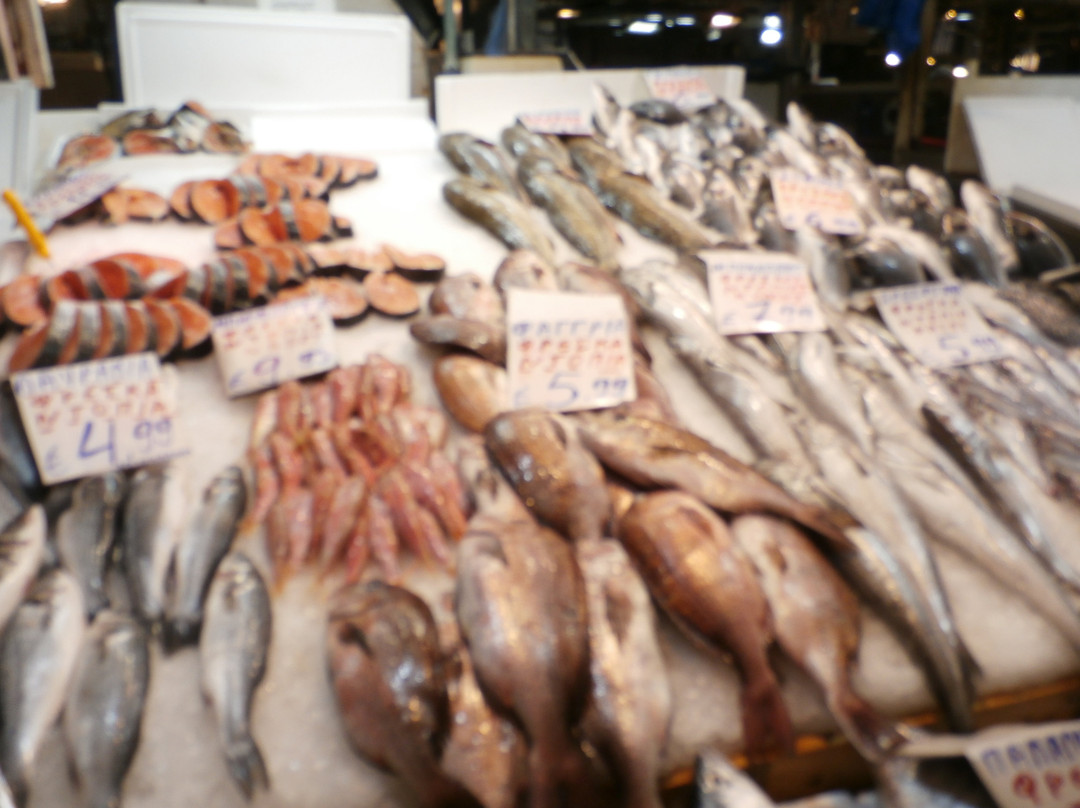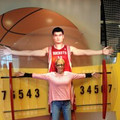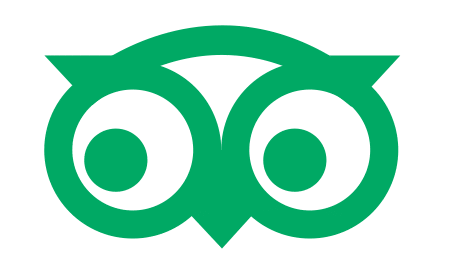的点评
Grateful we didn't stay long
Central Market Athens的点评
点评:The Central Market Fish & Meat Market was part of our Athens Food Tour with Context Travel. Our guide, Melina, visited several different shops and markets in central Athens and showed us things that we would probably never see on our own. Of course, we also toured the fish and meat market, which is an altogether different experience within itself. I’m gratefully that we didn't stay too long. My grandkids (ages 13,12, and 10) had toured a meat market in Paris a couple of years ago, so they knew what to expect, but it's certainly not for the squeamish. Most of cities in Europe have some-type of open-air market where people can buy vegetables, fish, meat, nuts, herbs, and spices. Just about everything that’s grown, caught, raised, or picked in the immediate vicinity is available. The Athens market is, reportedly, home to over 100 butchers’ stalls, around eighty fresh fruit and vegetable stands, and more than 150 seafood stalls. First constructed in 1886, most stalls and stands are family-owned with the same vendors using the same stalls in the market for several decades. The market is open from seven in the morning until four, and when we walked through it was noisy, crowded, and bustling with business as the locals and restaurants shopped for fresh produce, meat, and seafood. Unlike in the US where meat and fish, are found in the supermarkets in prepackaged serving-size portions, here the meat and fish are brought whole and cut to order on-site. And, of course, the meat section is notorious for the hanging hooks where it is normal to see the whole animal hanging there as the butchers work slicing off parts. The goal is to sell the whole animal - all parts. In some areas, the halls of the market are quite narrow, and you end up walking uncomfortably close to the vendors and butchers as they work. Don't walk by the Lefkaditis Butcher stall unless you are prepared to be grossed out. They specialize in the cheap animal parts like oxtail, animal heads, tongue, cheeks, feet, hooves, organs, and tripe. Luckily, the most prominent section of the market is the seafood section, which offers a wide range of catches from the Mediterranean and Aegean, including octopus, squid, and cuttlefish. Some people enjoy touring the meat and fish market, while others are repulsed and shocked by the sights and distinctive strong smell. One way or the other, if you have never seen anything quite like this, you will have an opinion. Completely a different side of Athens that I had not seen before and really not my cup of tea.
翻译:中央市场鱼肉市场是我们与 Context Travel 一起进行的雅典美食之旅的一部分。我们的导游梅丽娜参观了雅典市中心的几家不同的商店和市场,向我们展示了一些我们自己可能永远看不到的东西。当然,我们还参观了鱼肉市场,这本身就是一次完全不同的体验。我很庆幸我们没有呆太久。我的孙子们(13、12 和 10 岁)几年前参观过巴黎的肉市场,所以他们知道会发生什么,但这肯定不适合胆小的人。欧洲大多数城市都有某种露天市场,人们可以在那里买到蔬菜、鱼、肉、坚果、香草和香料。几乎所有在附近种植、捕获、饲养或采摘的东西都可以买到。据报道,雅典市场有 100 多个肉摊、大约 80 个新鲜水果和蔬菜摊,以及 150 多个海鲜摊。市场始建于 1886 年,大多数摊位和摊位都是家族经营的,几十年来,相同的摊主一直使用相同的摊位。市场从早上七点开放到下午四点,我们走过的时候,这里很吵闹、拥挤、生意兴隆,当地人和餐馆都在购买新鲜农产品、肉类和海鲜。与美国超市中预先包装好的份量大小的肉类和鱼类不同,这里的肉类和鱼类是整只送来,现场切割。当然,肉类区以挂钩而闻名,屠夫们正在切下肉块,整只动物挂在那里是很正常的事。他们的目标是卖掉整只动物——所有部位。在一些地区,市场的大厅相当狭窄,你走在工作的小贩和屠夫附近会感到不舒服。除非你准备好被恶心到,否则不要走过 Lefkaditis 屠夫摊位。他们专营廉价的动物器官,如牛尾、动物头、舌头、脸颊、脚、蹄、内脏和牛肚。幸运的是,市场最引人注目的部分是海鲜区,提供来自地中海和爱琴海的各种海鲜,包括章鱼、鱿鱼和墨鱼。有些人喜欢参观肉类和鱼类市场,而另一些人则对这里的景象和独特的强烈气味感到厌恶和震惊。不管怎样,如果你从未见过这样的事情,你会有自己的看法。这是雅典完全不同的一面,我以前从未见过,而且真的不是我的菜。


此点评仅代表旅行者个人的主观意见,并不代表TripAdvisor以及其合作方的意见。
关于我们
|
新闻动态
|
商务合作
|
会员中心
|
业主中心
|
业主通
|
常见问题
|
意见反馈
|
联系我们
|
营业执照
© 2026 Tripadvisor 版权所有。
使用条款 |隐私政策 |网站工作原理
部分照片由 VFM Leonardo 提供。
* Tripadvisor不是旅行社,也不是旅游预订服务代理商。我们提供免费、客观、公正的旅游资讯服务。 (显示更多)
TripAdvisor LLC 既不是预订代理商,也不是旅游运营商,不会向网站用户收取任何服务费。 按照规定,在 Tripadvisor 发布机票价格、游览和旅行套餐的合作伙伴(航空公司、旅行提供商及预订代理商),其标价须包含所有费用和附加费用。 例如, 机场出入境税费、消费税与其他服务费、手续费、杂费及附加费用。 当您向我们的某个合作伙伴进行预订时,请务必查阅他们的网站以了解当地行政部门要求的所有适用费用的具体情况。 除非另有说明,机票价格通常指的是一个人的价格(以人民币计)。
为方便起见,TripAdvisor LLC 根据从我们的预订合作伙伴获取的空房率计算每个酒店的均价。 对于游览和景点来说,所显示价格通常是每位成人的最低可用价格。 对于列出的任何旅行套餐或优惠,TripAdvisor LLC 无法保证任何特定的费率或价格。 此外,酒店均价每晚会更新,并以您的首选币种表示(使用现行汇率)。 由于这些已换算的价格是预估价格,因此,有关具体金额和币种请与预订网站进行核实。
此外,TripAdvisor LLC 无法保证我们网站上宣传的价格随时有效。 标价可能需要预订一定天数才能生效,或有不可用日期、使用条件或限制。
TripAdvisor公司对外部网站的内容一概不负责。优惠价格中不含税和其他费用。
ICP证:沪B2-20200433
沪ICP备20013175号
 沪公网安备31010502005427号
沪公网安备31010502005427号鹰程信息技术(上海)有限公司
货币/国家及地区
¥CNY
中国

